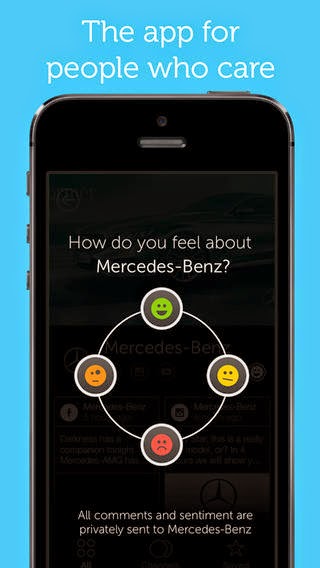BSI Innovation blogs about Innovation, Money, Venture Capital, Grants, Exports and Research and Development (R&D)
Alliance Partners
Sunday, August 24, 2014
Who could forget this technology
Saturday, August 23, 2014
Wednesday, August 20, 2014
2m raised at big pitch funding
Sunday, August 17, 2014
Coca-Cola and Monster deal turns founders into billionaires
Fortunes shifted for the better in April 2002, when the pair launched Monster, an energy drink priced the same as Red Bull in cans twice the size. The Monster brand was so successful that the company changed its name to Monster Beverage in January 2012.
The difference between a startup and a small business
Airbnb - How it started
Friday, August 15, 2014
Keynected launched today - need your help!!
We are delighted to announce the birth of keynected www.keynected.com ... (Launched on App Store today).
Help:-
I have been challenged to get a sample of 1000 users to download the app within the next 5 days -
So...please download keynected, play with it, and if you love it share it with your friends.
At the moment you need to have an I-phone or IPAD and have Facebook (Android is coming soon)
It would be fantastic if you could give us feedback and suggestions.
What is it
Keynected is an aggregation of all your Facebook and Social Media LIKES and their POSTS.
Now you can find your favourite magazines, brands, celebs, teams and causes ALL IN ONE PLACE, and share the content that you like with your friends via email, message or social media.
IT IS SUPER EASY TO USE (and I find it a bit addictive!!)
If you have an iPhone and are on Facebook, please download Keynected from the Appstore or from http://keynected.com (and soon to come for Android devices and phones.)
Download from App Store:
Check out the Website
View the Demo Video
have a great weekend
Sunday, August 10, 2014
Who do you know that became successful before going to University?
Saturday, August 09, 2014
Digital Disruption is the key
Republished from Which-50.com
The giant dotcoms like Google, Facebook and Yahoo have made the transition successfully through the most disruptive moment of their short histories. And they have emerged more powerful than ever before.
Disruption is not a death sentence.
The desktop web as we came to understand it emerged in the mid 90's and changed the world dramatically in just a decade. The mobile web emerged during the last decade with the arrival of iPhones and then Google's Android. Its impact was even more disruptive, dramatic and far reaching, and it is still only getting started.
Only three years ago Facebook made no money from mobility and in its stock market prospectus said it didn't really know how it would. Google was a search engine seven years ago, and there were no Android phones in the world. Yahoo was the old man of the club, poorly run and trading on reputation, until Marissa Mayer laid down her "mobility first" dictate.
Today those three companies clearly lead mobile web traffic in the US, each garnering over 85 per cent reach amongst US mobile web consumers in the most recent month according to comScore. And the story doesn't stop at the top three. Run your finger down the top ten list and the story is the same all the way down. Giant tech brands with an internet provenance anchored on the desktop now dominating the smartphone economy.
How were these techs leaders able to survive the wave of digital disruption and emerge so powerful when so many other companies in other sectors withered.
Three characteristics stand out;
- An obsessive focus on customer service, epitomized by companies like Amazon
- An extraordinary pursuit of digital capability and design excellence as represented by companies like Apple
- And a brutal facility to execute disruptive strategy at scale and speed as demonstrated by companies like Google and Facebook.
Capgemini rang the bell on this trend in a report into digital leadership last year where it measured the maturity of business models based on digital capability and capacity to execute. Not surprisingly tech companies own the leadership quandrant as the chart below describes.
As Statista noted earlier this year , "In the end it appears as if the same companies that dominated the internet for years smartly used their size and scale to reach dominance in the mobile space as well."
When you start to drill down into individual company performances the impact of mobility becomes even more stark. Apple for instance will likely derive almost 70 per cent of its gross profits from iPhones this year as the chart below from Statista outlines.
With a higher priced and bigger screened iPhone apparently on the way, Apple is replying on smart mobility to defend its margins. As Statista says, "Given the fact that the iPhone is already Apple's biggest cash cow (see the chart for a breakdown of Apple's estimated 2014 profit), the prospect of improved margins on a top-selling new iPhone will bode well with Apple's shareholders which are waiting for positive news from Cupertino."
Tuesday, August 05, 2014
Have retailers embraced mobility? Great opportunity for them
Australia’s shoppers have embraced mobility, but retailers are barely getting started: study -By Stanislas Nouveau
Despite the rise of smartphone usage in retail by Australia’s shoppers, most Australian retailers have yet to adopt sophisticated mobile strategies. A joint mobile commerce study from NetSuite and the Australian Retailers Association, conducted by Frost & Sullivan, has revealed that local retailers remain largely unprepared for mobile commerce.
“There is a reasonable disconnect between the retailer and customer expectations, and this creates a lot of opportunity for retailers to rise to the occasion and take on market share.” Read more


















